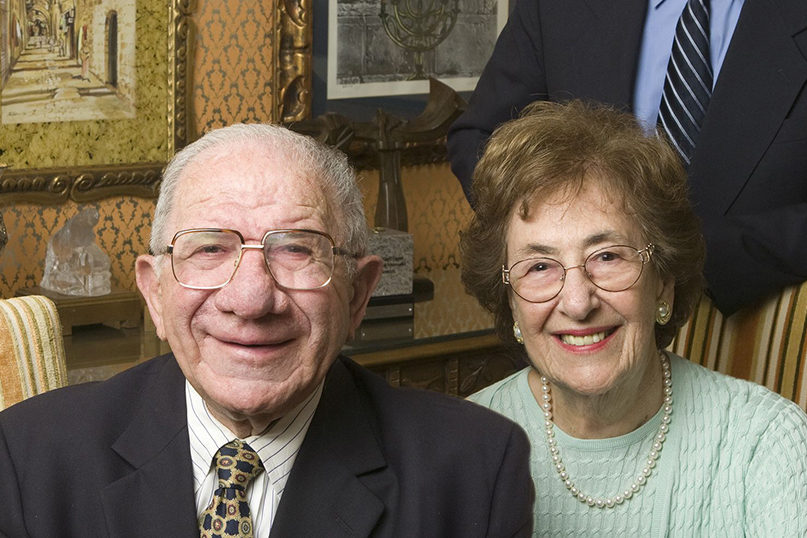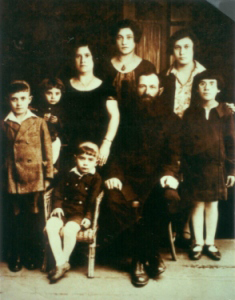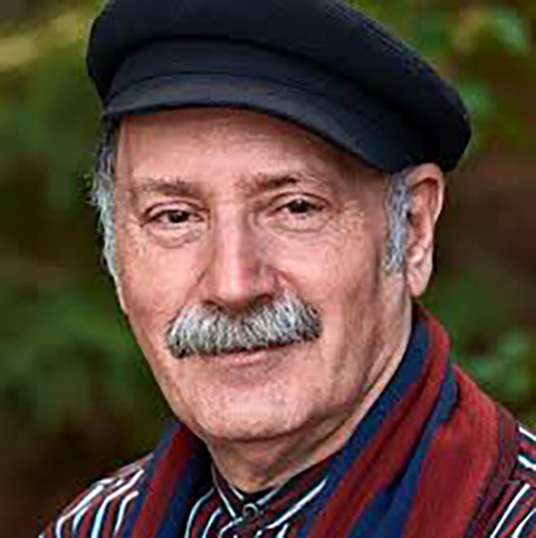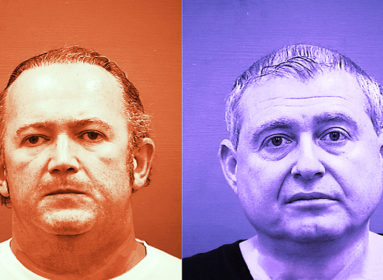
By Stacey Dresner
HARTFORD – It only took meeting the late Simon Konover two times to inspire UConn’s Daniel Weiner to want to develop, along with Konover’s daughter, a project focusing on the European roots of Jewish Hartford.
Weiner, the vice president of Global Affairs at the University of Connecticut Storrs, recalls speaking to Konover, the esteemed West Hartford real estate developer and philanthropist, about the importance of education.
“Being a person who was a survivor of the Holocaust, and a lot of other things, he thought it was really important that young people and future generations really knew about what was going on,” Weiner recalled.
After Konover passed away in 2015, Weiner talked with Konover’s daughter Jane Coppa, who had been thinking about starting a program to celebrate her father’s life. The two came up with the idea to start a project that would celebrate Jewish life in pre-Holocaust Europe.
“We spend a lot of time commemorating the Holocaust,” Weiner said. “I always felt there was so much focus on death and genocide, which is obviously very, very important, but I felt it was important also to really educate people about Jewish life before the Holocaust. And that was a very complex, highly-differentiated society.”
That all but decimated pre-war society is the focus of the Jewish Hartford: European Roots project.
“The project focuses on the rich Jewish life that existed before the Holocaust in Eastern Europe; the diversity and the culture and the liveliness of it,” said Estelle Kafer, director of the Jewish Historical Society of Hartford (JHC) and coordinator of European Roots.
The project supports lectures, field trips, adult learning, youth education, and other programming about Jewish life in Europe.
It is hosted by UConn Global Affairs with participation by UConn’s Thomas J. Dodd Research Center (which houses the project), and UConn’s Center for Judaic Studies and Contemporary Jewish Life, as well as the Jewish Federation of Greater Hartford, the Jewish Historical Society, Trinity College Jewish Studies, the Maurice Greenberg Center for Judaic Studies at the University of Hartford, Voices of Hope, and the Yiddish Book Center in Amherst, Massachusetts.
The Jewish Hartford European Roots project is funded by the Konover Coppa Family Fund of the Jewish Community Foundation of Greater Hartford.
“My father’s family in Poland all worked very hard and had very little, but there was a true sense of joy,” Coppa said. “I think the joy came from the sense of family and the sense of tradition there. I think that is what he exuded – that sense of joy and he carried that through his life even though he went through such hard times.”
Running this project through UConn made sense. Coppa’s mother Doris was a UConn graduate and her father had laid floor tiles in the UConn student union there as a young man in the 1950s, years before he became a prominent Hartford businessman.
Over the years, the Konovers were instrumental in the creation of the Thomas J. Dodd Research Center, and founding supporters of the Center for Judaic Studies and Contemporary Jewish Life, at which a faculty chair has been established in their honor. Simon and Doris Konover also helped support the University Libraries, UConn Health Center, and the Kosher Dining Hall. The Dodd Center’s main auditorium is named in honor of Doris and Simon Konover and was dedicated by United States Senator Christopher Dodd in 1996.
A steering committee works on program planning. The committee is comprised of Kafer; Alan Berkowitz, JHS board member; Kathy Fishman of Voices of Hope; Professor Samuel Kassow of Trinity College; Josh Lambert of the Yiddish Book Center; Professor Avinoam Patt of the University of Hartford’s Greenberg Center; Weiner, Glenn Mitoma, Alan Marcus, Jeffrey Shoulson, Sebastian Wogenstein, all of UConn; and Laura Zimmerman of the Federation’s Jewish Community Relations Council.
“One of the things we are trying to do is connect different organizations in greater Hartford. It’s a very rich community, rich with activities. We are trying to connect people and bring people together,” Weiner said.
Jewish Hartford European Roots’ first event, held last May at Infinity Hall, featured a talk about Jewish food with Jeffrey Yoskowitz, author of The Gefilte Manifesto.
“We are trying to have programming that is varied and diversified,” Kafer said.
The next event, “Klezmer: Music, History and Memory,” will be held on Tuesday, March 19 at The Emanuel Synagogue and will feature a lecture and presentation by Professor Walter Zev Feldman.
European Roots has planned a “Journey to Lithuania and Poland” from July 15 – 26, led by Prof. Kassow to explore Yiddish culture and Jewish life in pre-war Europe, visiting cities including Vilnius, Bialystok, Warsaw and Krakow. Up to three full fellowships and four partial fellowships will be awarded to Connecticut teachers who apply to participate in the trip as a way to expand on the Holocaust and Genocide curriculum that was mandated by the state last year.
Weiner says Simon Konover remains the inspiration for the project and the rich programming it generates.
“Part of it was Simon, who was so full of life himself,” said Weiner. “He had been through such a difficult time, not just in the Holocaust, but also in the war with the Soviet Union. We often ask, where does that life come from? So this came after he passed, but the conversation began with him.”
“My father was an absolutely fabulous dad, a wonderful person and he had great warmth and great concern for the world. And I believe that that and his values came from his Jewish roots growing up in the shtetl in Poland,” said Coppa. “I really wanted to celebrate that because that life ended with the Holocaust, and my father’s 16 years pre-war ended at that time, and he lost his family. I wanted to celebrate what that culture did for him and for his family and, I think, for the world – for the Jewish world and the entire world. It was a great culture.”
Comments? email staceyd@jewishledger.com.
CAP: Simon and Doris Konover.
Klezmer: Music History and Memory with Walter Zev Feldman
By Stacey Dresner
WEST HARTFORD – In the 1970s, the musical duo of Walter Zev Feldman and Andy Statman began working with legendary Klezmer clarinetist Dave Tarras. The young musicians’ work with Tarras resulted in a concert series in New York City that is acknowledged to have started a revitalization of klezmer music and Yiddish culture in the U.S.
On March 19, Feldman, now a professor and researcher of Jewish and Ottoman Turkish music, will share his vast knowledge of klezmer music in a program called “Klezmer: Music, History and Memory,” at The Emanuel Synagogue in West Hartford. The program is co-sponsored by Emanuel, the Jewish Hartford European Roots, and the Jewish Historical Society of Greater Hartford.
Feldman’s lecture will include musical examples of klezmer music and demonstration of dance movements. He will be accompanied by accordionist Christine Crowder.
“We wanted to do a music program and Professor Feldman is a leading expert on klezmer – the music, dance – showing how the movement of the body was so important in klezmer,” says Estelle Kafer, coordinator of Jewish Hartford European Roots (see story p. 5).
To that end, Feldman explains that he is going to “try to connect the European klezmer repertoire with the Jewish expressive culture.”
In other words, this is not your run-of-the-mill Hora.
“The point I make is the relationship of gesture to traditional Jewish dance and how that is reflected both in the movement of dance and the music that was used to accompany dance, especially of the more serious solo dancing which died out in America pretty quickly. And then the relationship with what is called moralishe negunim (melodies of high moral character), which in Europe used to be the instrumental accompaniment for the different parts of the wedding. These in turn relate to movements of musaf tefillah in the synagogue liturgy.”
Klezmer music was born in the 1500s, Feldman says.
“It begins in the renaissance in Prague, which was a very important center of Jewish life and culture and had been for a very long time,” he says. “Prague was very connected to Jewish centers in the east, like the Ottoman territory, and Kaballah was very wide-spread in the 16th century. We know that the 16th century was when we first read documents about the Jewish musicians guild – the klezmorim – and the first time the word is used was in Prague in the 16th century.”
Feldman says that for the next century, there is no documentation to tell us what the klezmorim were doing, but by the late 17th and early 18th century, klezmer music evolved when Ashkenazi Jews began immigrating into Ottoman Moldova. Klezmer became infused with four different musical influences: synagogue music; the renaissance dance movement, baroque music; and Turkish and Greek music.
Klezmer first came to the United States in the 1880s with the influx of Eastern European Jews.
After World War II, klezmer’s popularity decreased, due to factors including the Shoah and the assimilation of American Jews.
Feldman himself was born in New York in 1949 and was raised in a Yiddish-speaking home. His father had immigrated to the U.S. from “a North Moldovian shtetl” and told him stories about Yiddish culture back home in Eastern Europe.
Feldman’s professional background was in visual arts but by the ‘70s Feldman had found klezmer (and other forms of immigrant music, like South Balkan music), and began playing with bluegrass musician Andy Statman.
Feldman has a doctorate in Central Asian literature from Columbia University, has written several books, and has taught many courses on klezmer and Turkish music as well as other topics. Most recently he was a visiting professor at New York University’s campus in Abu Dhabi.
At the West Hartford event on March 19, Feldman will play some old European recordings and some more modern recordings, while he demonstrates some Jewish dance moves.
“Jewish dance is largely based on the upper body rather than the legs,” he says. “Of course we move, we have steps, but what makes Jewish dance Jewish dance is how the hands move, how the shoulders move – the whole upper body expression which is distantly connected to how the Yiddish language functions. If Yiddish is properly spoken you have to use your hands and your whole face and your head. Yiddish is meant to be a gestural language.”
He hopes his audience at Emanuel Synagogue will feel moved to get up and dance along with him.
“The choreography of Jewishness is part of what I do. Part of the expression of Yiddishkeit has to do with how you move and how you stand… I can see it immediately in how someone stands and moves.”
“Klezmer: Music, History and Memory,” with Prof. Walter Zev Feldman, Tuesday, March 19, 7 p.m., at The Emanuel Synagogue, 160 Mohegan Dr., West Hartford. $10/in advance, $12/at the door, FREE/UConn students. For information: (860) 727-6170, lnewman@jewishhartford.org.







 Southern New England Jewish Ledger
Southern New England Jewish Ledger














